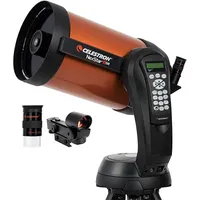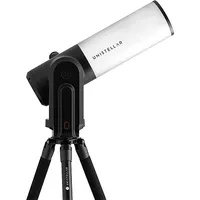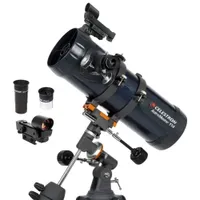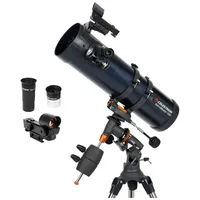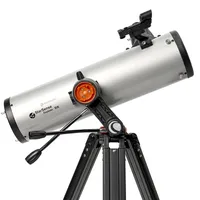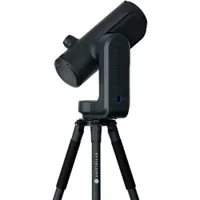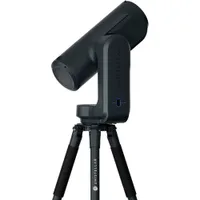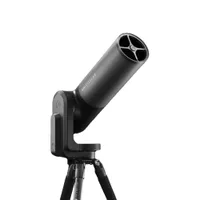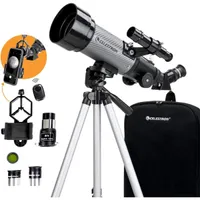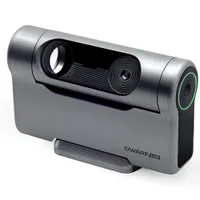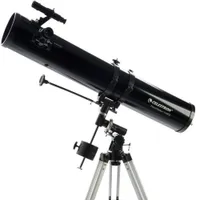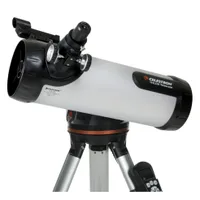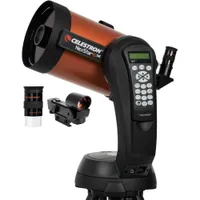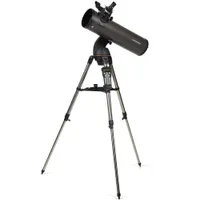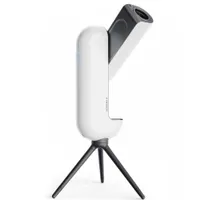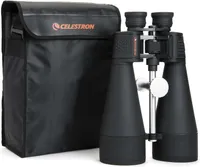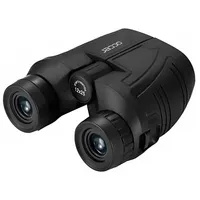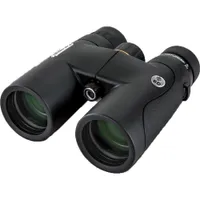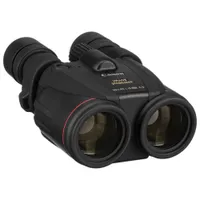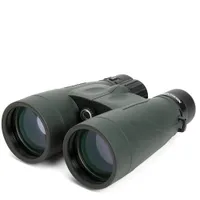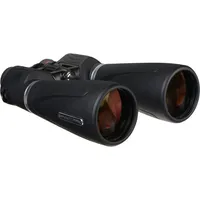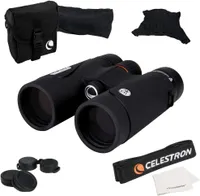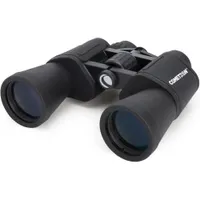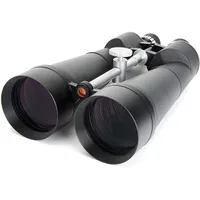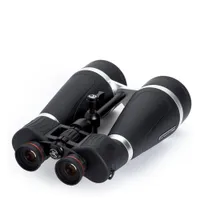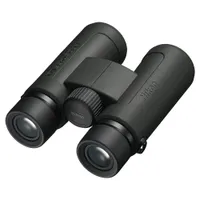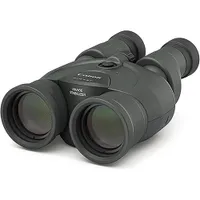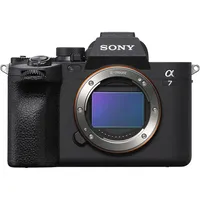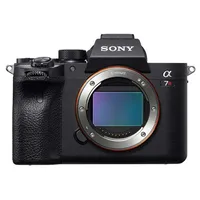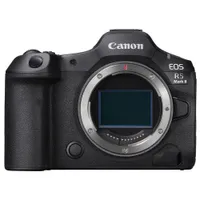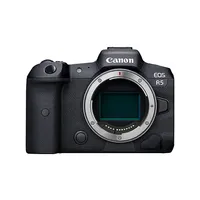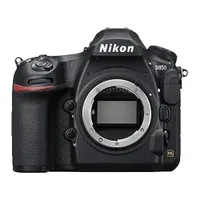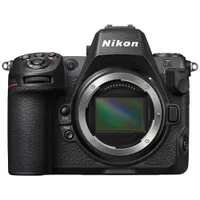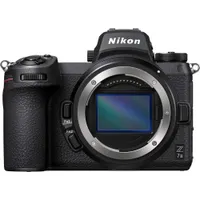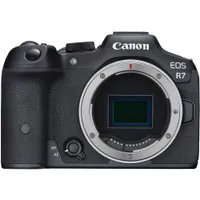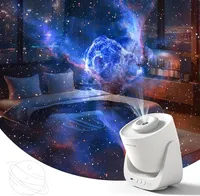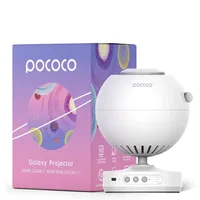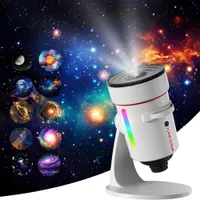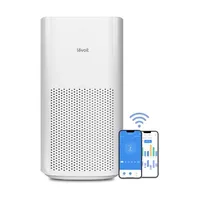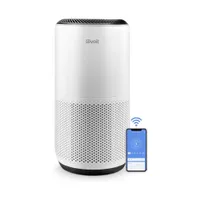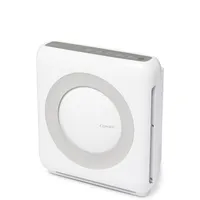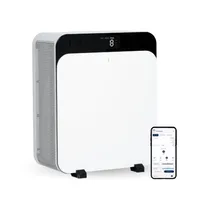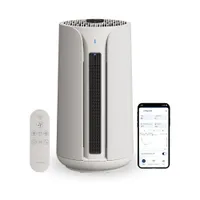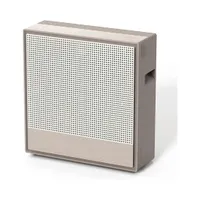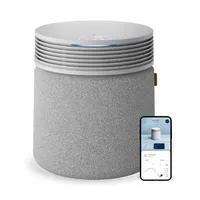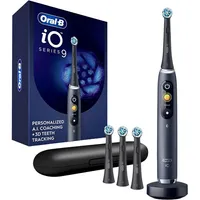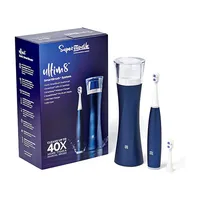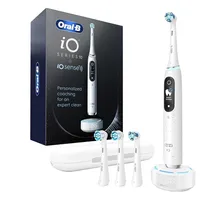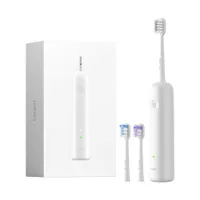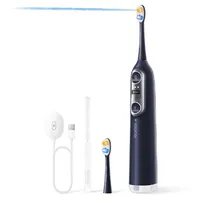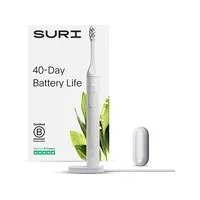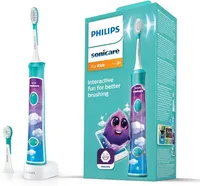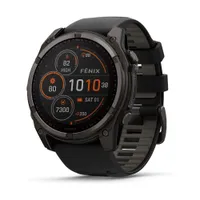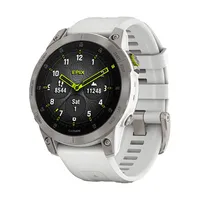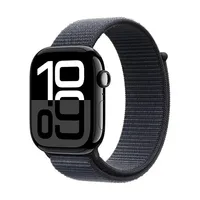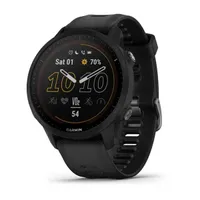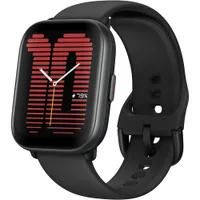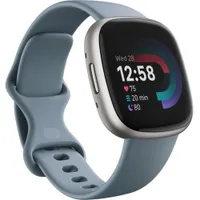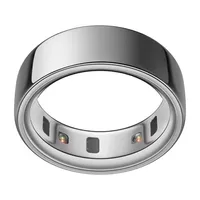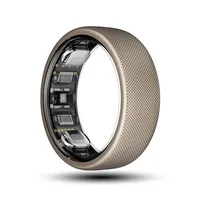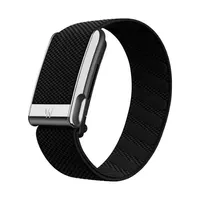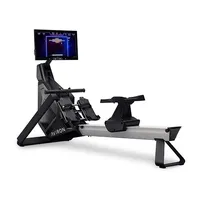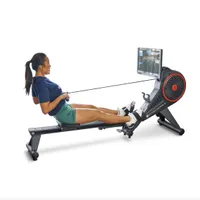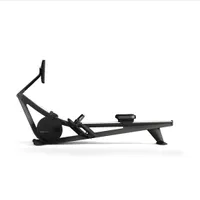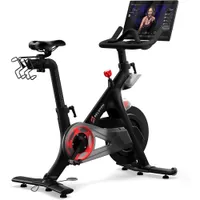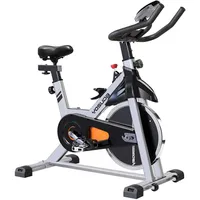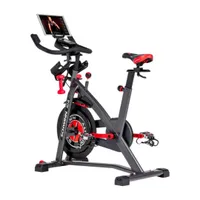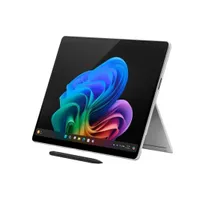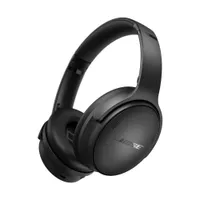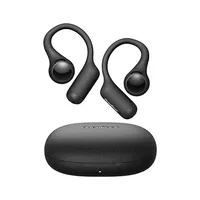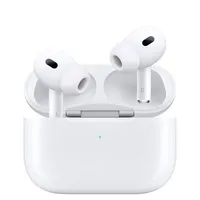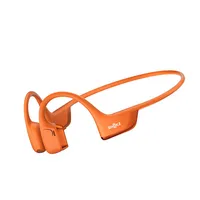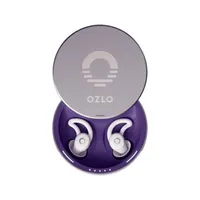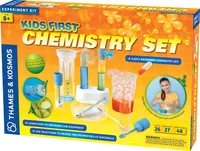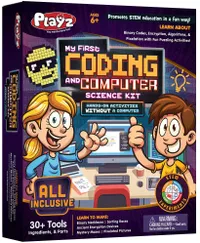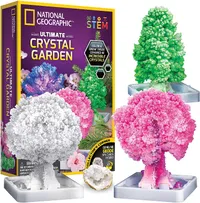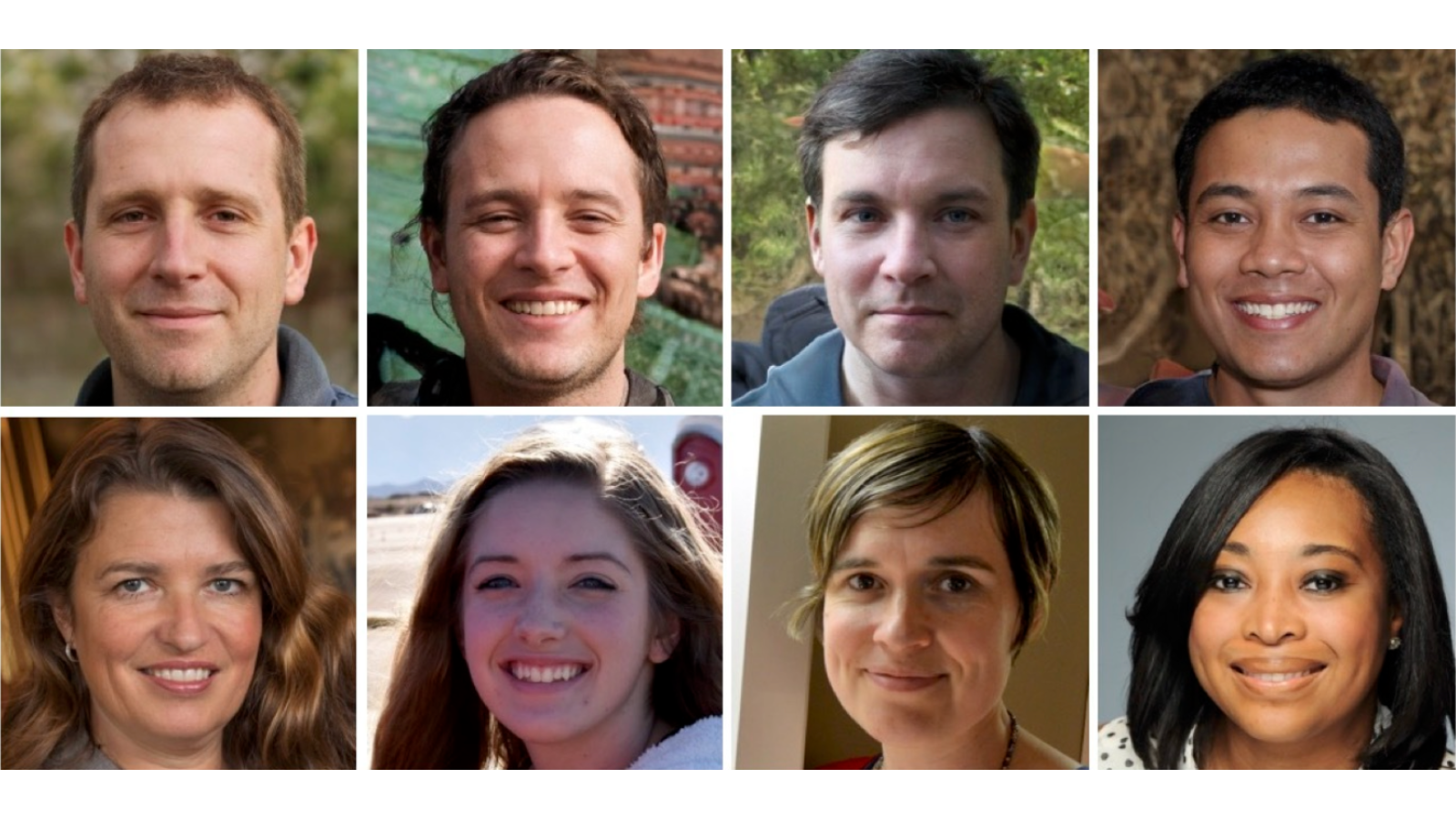Cyber Monday 2025: Best deals on telescopes, binoculars, cameras, air purifiers and fitness gear
It's Cyber Monday, and we're here searching the web for the best discounts on air purifiers, electric toothbrushes, telescopes, binoculars, cameras and more.
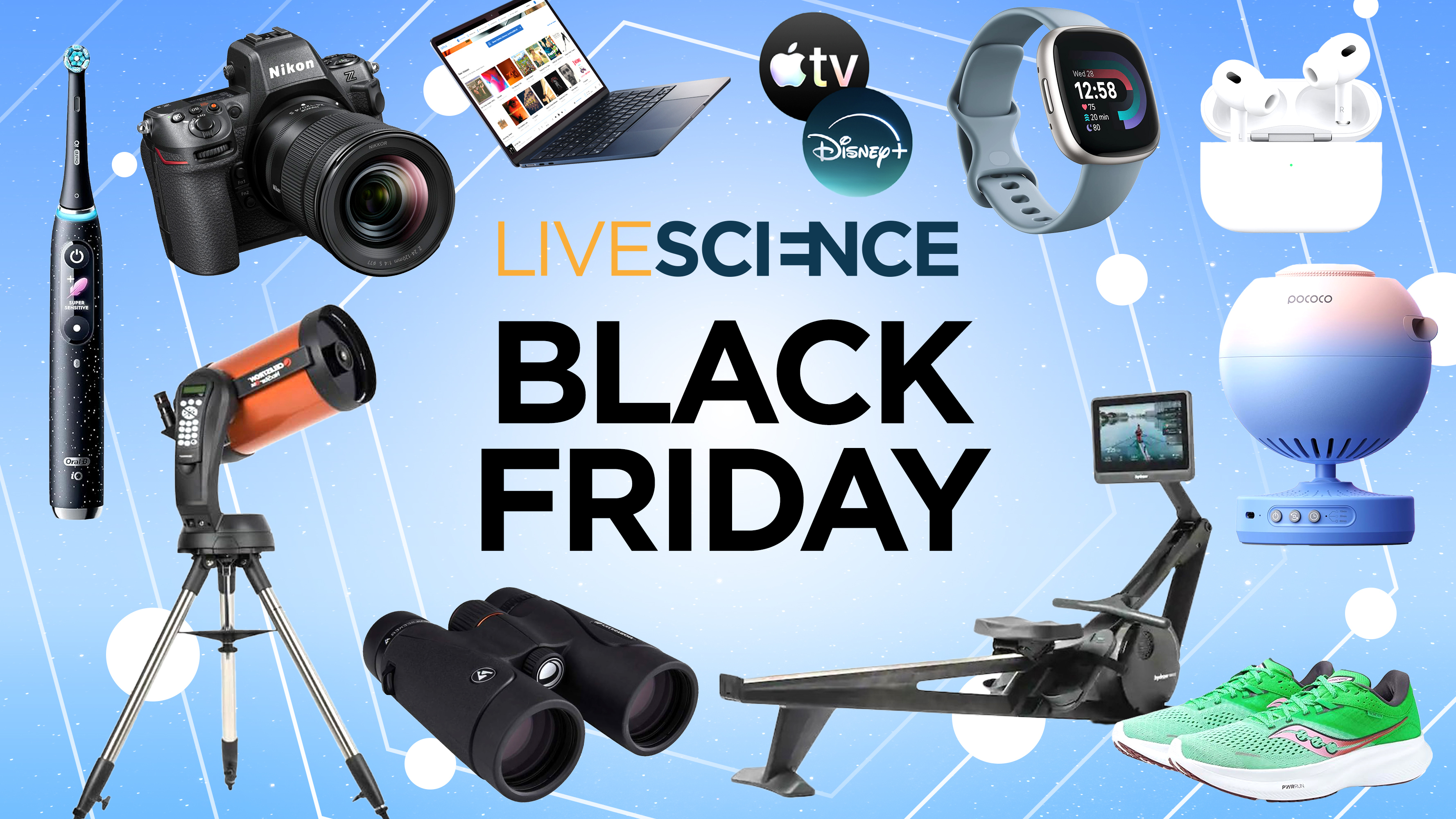
Black Friday weekend is almost over, and Cyber Monday officially ends at 23:59 tonight, Monday, December 1, but we've been keeping track of our favorite products to bring you the best Cyber Monday deals on air purifiers, fitness trackers, rowing machines, electric toothbrushes, telescopes, cameras, binoculars, star projectors and more.
In order to make sure you're not getting scammed, we thoroughly research each deal to ensure there's been no price-gouging, and we check the price history to evaluate how good each deal actually is. Plus, we only focus on products we've actually used and tested ourselves, so we can personally attest to their quality and value for money. Remember, if it's too good to be true, it usually is.
If you're not sure what to buy, it's worth doing a bit of research before investing in a new piece of kit. You may be wondering if you should buy a Garmin this Cyber Monday or which binoculars are best for stargazing. In each deal we recommend, we provide links to relevant articles to help you decide.
The best Cyber Monday deals we recommend in 2025
Cyber Monday 2025: Quick List
- 💲 Shop all Amazon deals
- 🔭 Telescopes: Save over $100 on our favorite telescope brands
- 🔍 Binoculars: Save up to $80 on our favorite binoculars
- 📸 Cameras: Now $800 off Nikon D850 in this insane discount
- 📽 Star projectors: Deals with over 30% savings
- 📺 Streaming deals: Save 70% on HBO Max, one of the best streaming deals we've seen so far
- 🔬 Microscopes: Nearly 30% savings on the best microscopes
- 💻 Laptops: Our top picks are now 25% cheaper
- 🍃 Air purifiers: Save up to 55% on the best air purifiers
- 🪥 Electric toothbrushes: 30% off Oral-B Genius X Limited
- ⌚️ Fitness trackers: Garmin smartwatch over 50% cheaper
- 🏋️♀️ Exercise equipment: 25% off rowing machines, treadmills 20% cheaper
- 🎧 Running headphones: 50% discount on our favorite earbuds
- 👟 Running shoes: Up to 50% off brands like Under Armor
- 💧 Dehumidifiers: 20% cheaper during Cyber Monday
Cyber Monday telescope deals

- Find the best Cyber Monday telescope deals with massive savings!
Save $200 on the 'world's most beloved telescope'. Observe planets, the Moon and deep-space objects with exceptional clarity. We think it's the best telescope out on the market.
Read our Celestron NexStar 8SE review (★★★★½)
Featured in: Best telescopes
Save $1,000 on the beautiful and stylish Unistellar eVscope 2. It's a fantastic telescope to gaze at the night sky, and the smart functionalities make using it a breeze — provided you have the budget for it.
Read our Unistellar eVscope 2 review (★★★★½)
Featured in: Best telescopes, Best smart telescopes
Save $87 on this Newtonian Reflector telescope from Celestron. With its 114mm aperture, you can feast your eyes on Saturn’s rings, Jupiter’s moons, our moon's craters and beyond. The EQ mount takes some patience to set up, but once you've sussed it out, it gets easier and quicker every time.
Save $75 on this telescope that allows beginners to easily observe the Moon, Saturn's rings, Jupiter's moons and star clusters. It's an affordable option for beginners who want to get to grips with equatorial mounts. Our optics writer bought one last year and has had many enjoyable evenings with it.
Featured in: Best telescopes, Best beginner telescopes
Save $134.96 on the StarSense Explorer DX 130AZ. It's a great beginner scope, and the StarSense App navigates you toward the celestial objects currently visible in the night sky — an affordable alternative to a scope with a GoTo.
Save over 25% on the brilliant Unistellar Odyssey Pro. Want the magic of observational astronomy with an eyepiece alongside the intelligence of a smart telescope? The Odyssey Pro perfectly fits the bill.
Save $500 on the latest and most affordable smart telescope from Unistellar. Observe nearby planets or deep-sky galaxies and nebulas, even in light-polluted cities.
Save $500 on an incredible smart telescope to get detailed views of nebulas and galaxies in seconds, although we found the lunar and planetary views lacking. It's great for beginners who want to get going quickly, and the app works perfectly.
Read our Unistellar Equinox 2 review (★★★★½)
Save 44% on this travel scope bundle from Celestron with everything you need to get started, including two eyepieces (20mm and 10mm), a finderscope, erect image diagonal and a travel backpack.
This incredibly travel-friendly smart telescope is ideal for beginners or anyone on a budget who wants to take images of the moon and deep sky objects. Our optics writer has one and has taken some amazing photos of Andromeda.
Save $51 on this relatively beginner-friendly telescope. You'll get great views of the moon and some brighter deep-sky objects, and although it might take time to get to grips with, the EQ mount is great for tracking objects across the sky.
The Celestron 114LCM is a powerful telescope that comes with everything beginners need for stargazing, including a full-height tripod, 2 high-quality eyepieces (25mm & 9mm) and a StarPointer red dot finderscope.
Save $160. The Celestron NexStar 6SE is the older sibling of the 8SE and is a slightly smaller and less powerful version, although still fantastic in its own right. It's a great option if you can't stretch your budget to the 8SE.
Save $109 on this GoTo telescope from Celestron. It has a database with over 4,000 stars, galaxies, nebulas and more, and it will automatically locate and slew to your chosen object.
Save over $100 on the Vaonis Vespera II. It produces 8.3MP images and outperforms many of its more expensive competitors. For deep space imaging of galaxies and nebulas, it's fantastic value for money.
Read our full Vaonis Vespera II review (★★★★★)
Featured in: Best smart telescopes
Cyber Monday binocular deals

- Find epic savings with the top Cyber Monday binocular deals
These massive astronomy binos need to be mounted on a tripod, but you'll be treated to stunning views with 20x magnification — ideal for the upcoming supermoons.
Save 50% on these compact binoculars for kids. They're very portable and are ideal for throwing into your backpack to take on camping trips. This is the cheapest we've seen them in a long time.
Read our Occer 12x25 review (★★★★)
Featured in: Best compact binoculars, Best binoculars for kids
Save $63 on these fantastic bird-watching binoculars. The ED glass almost completely eliminates any chromatic aberration, and the 8x magnification makes following birds easy with its wide field of view. We think the optics were very good for the money.
Over $300 cheaper at Newegg than Amazon, these are our favorite image-stabilized binoculars. With 'L' glass from their camera lens lineup, we thought the image quality was excellent in our full Canon 10x42L IS WP review, and they're also fully waterproof.
Save $77 on a pair of the best binoculars for stargazing. Their impressive 12x magnification and 56mm objective lenses are ideal for stargazing and for spotting wildlife.
Read our full Celestron Nature DX 12x56 review
Featured in: Best binoculars, Best binoculars for stargazing, Best binoculars for kids (8x32 version)
Save $65 on a pair of the best stargazing binoculars. These binoculars are well suited to lunar viewing, thanks to their powerful 15x magnification and 70mm objective lenses, which soak up low light from the moon's surface.
The Celestron Trailseeker ED have fantastic image quality, excellent sharpness and virtually no chromatic aberration. They're a great binocular for bird-watching.
A perfect entry-level pair of binoculars on a budget. The 50mm objective lenses are ideal for stargazing, and the 7x magnification gives a closer look at the night sky while keeping things steady enough to use handheld. If you've been thinking about buying your first pair, you won't reget this purchase.
Save $139 on these huge and seriously powerful stargazing binoculars. Their massive 25x magnification and 100mm objectives give stunning and detailed views of the night sky — but you will need to mount them on a tripod. Make sure you add the coupon at checkout.
Read our full Celestron 25x100 review (★★★★)
Featured in: Best binoculars for stargazing
Save $60 on our favorite stargazing binoculars. With powerful 20x magnification and massive 80mm objective lenses, they're incredible for observing the night sky up close, but you will need a tripod.
Make sure you add the coupon at checkout.
Read our Celestron SkyMaster Pro 20x80 review (★★★★)
Featured in: Best binoculars for stargazing
We gave 4/5 stars to the 8x42 variant, which are identical except for the slight difference in magnification. We were impressed by their optical quality and the 42mm objectives are great for generalist use and birdwatching.
Read our Nikon Prostaff P4 8x42 review (★★★★½)
Featured in: Best binoculars for kids (8x42 variant)
These image-stabilized binoculars from Canon are a dream for birdwatching — we loved tracking birds in flight, with sharp views all across the image circle and bright views even at twilight.
Read our full Canon 12x36 IS III review (★★★★½)
Cyber Monday camera deals

- Find more massive savings on Cyber Monday camera deals
Save $700 on our favorite Sony camera for astrophotography. It has outstanding ISO handling and the 33MP images are rich, detailed and tack-sharp.
Read our full Sony A7 IV review (★★★★½)
Featured in: Best astrophotography cameras, Best cameras
The Sony A7R IV has a whopping 61MP resolution and although it has real-time eye tracking and overall excellent autofocus, it doesn't boast Sony's newer AI-powered Deep Learning. Still, if you shoot landscapes or people, it's a brilliant option.
Save $500 on the Canon EOS R5 II when you ditch Amazon and buy from Walmart. It's one of the best cameras on the market, particularly for wildlife photography, and we were blown away by the stunning 45MP images in our full Canon EOS R5 II review.
Save $700 on one of the best mirrorless cameras you can buy. It's amazing for just about any style of photography, and this is the cheapest we've seen it.
Read our full Canon EOS R5 review (★★★★½)
Save $967 on the best DSLR ever made ahead of Cyber Monday. It's perfect for any type of photography with its accurate autofocus for portraits and wildlife photography, it handles noise amazingly well for astro and can shoot stunning uncropped 4K video.
Read our full Nikon D850 review (★★★★½)
Featured in: Best astrophotography cameras, Best cameras for wildlife photography
Now at its lowest price since April, the Nikon Z8 regularly comes out on top for us. It's one of, if not the best camera on the market, and it's very well suited for astrophotography and wildlife photography. In our full Nikon Z8 review, we described it as the best all-round mirrorless camera ever.
Save $599 on the Nikon Z7 II, with a massive 45.7MP resolution, excellent autofocus and subject detection and capable of shooting 900 seconds of long exposure.
This crop-sensor powerhouse rattles off 32.5MP images at speeds of up to 30FPS, which is incredible for an APS-C camera. Plus, the 1.6x crop factor will afford you extra reach with long wildlife lenses.
Read our full Canon EOS R7 review (★★★★★)
Featured in: Best cameras for wildlife photography
Save $103 on this great little camera for beginners or anyone moving up to full-frame. It can focus down to -10EV, which is the lowest of any Nikon camera on the market, making it seriously great for astrophotography.
Read our Nikon Zf review (★★★★½)
Featured in: Best astrophotography cameras
Cyber Monday star projector deals

An affordable rival to the Sega, the Orzorz projects realistic imagery of planets, nebulas and galaxies from a variety of collectable discs.
Read our full Orzorz Galaxy Lite review (★★★★★)
Featured in: Best star projectors
Save $43 on the Pococo Galaxy Projector. It has excellent quality projections, plus it's small and rechargeable.
Read our Pococo Galaxy Projector review (★★★★)
Featured in: Best star projectors
Save 28% on this fun little astronaut star projector. Great for space fans of any age, it has 8 different nebula colors and will transform your space into a celestial wonderland.
This star projector provides an affordable alternative to the likes of the Orzorz and Pococo while still projecting scientifically accurate imagery, including constellations, nebulas and the moon and planets. It has two rotation speeds, adjustable brightness settings and an auto shut-off function.
Cyber Monday streaming deals
Save 62% until December 1 on Disney Plus and Hulu (with ads) for a year. There are countless captivating science and nature documentaries, sci-fi franchises and kid-friendly animated films.
Sci-fi fans, act fast! Lock in heaps of sci-fi and fantasy movies and shows to get you through the cold, dark winter. This is a huge saving.
'If it's out there, it's in here', the tagline for the sevice. This stream is a great place for science enthusiasts, history buffs, and self-proclaimed tech geeks to....geek out! This is a lifetime stream, for the price equivalent of four years of the annual subscription, less any price hikes.
Cyber Monday air purifier deals

If you are on the hunt for one of the best air purifiers and air purifiers for allergies, check out our Black Friday air purifier deal hub for even more excellent deals.
Save $100 on the Levoit 600S-P, our all-time favorite air purifier. This powerful, smart-enabled appliance takes the top spot in our guide to the best air purifiers: its impressive air-cleaning performance, user-friendly design and quiet fans are hard to match.
Read our full Levoit Core 600S-P review (★★★★½)
Featured in: Best air purifiers, Best air purifiers for pet owners
Save 31% on the Levoit Core 400S. This was our favorite air purifier for a long time before it was trumped by the above Levoit Core 600S. It is still an excellent air purifier
Read our full Levoit Core 400S review (★★★★½)
Save 21% on one of the best air purifiers for pet owners. The Levoit Vital 200S-P may not be the most compact or best looking appliance out there, but it does a fantastic job of getting rid of bad odors, hair and pet dander. It even has a dedicated Pet Mode and comes with a washable pre-filter.
Read our full Levoit Vital 200S review (★★★★½)
Featured in: Best air purifiers, Best air purifiers for allergies
Save $280 on our top pick for large spaces and commercial premises. The AirDoctor AD3500 features a pre-filter, a dual-action Carbon VOC filter for capturing odors and gaseous compounds, and an UltraHEPA filter capable of trapping 99.99% of airborne particles as small as 0.003 microns. Simply put, nothing gets past this air purifier.
Read our full AirDoctor AD3500 air purifier review (★★★★½)
Featured in: Best air purifiers, Best air purifiers for allergies
Save 38% on our favorite energy-efficient air purifier. The Coway Airmega AP-1512HH may not have the sleek looks or fancy smart features typical of a modern appliance, but it makes up for these shortcomings with excellent air-cleaning performance and an affordable price.
Save $210 on the first-ever air purifier with the HINS blue light technology capable of removing yeast, viruses, bacteria and other harmful germs. Not only is it immensely powerful and effective against a wide range of airborne pollutants, but it is also quiet, smart-enabled and durable.
Read our full Blueair Classic Pro CP7i review (★★★★½)
Featured in: Best air purifiers, Best air purifiers for allergies
Save $200 on the BlueAir ComfortPure, an all-in-one purifier, heater and fan from one of our favorite brands. With its sleek design, smart features and high efficiency at removing airborne pollutants, this multi-purpose appliance is a great option for cold winter months.
Save 40% on the Coway Airmega 250, a powerful air purifier suitable for spaces measuring up to 1,860 square feet. It comes with a washable pre-filter, HEPA filter and air quality indicator.
Read our full Coway Airmega 250 review (★★★★½)
Save 33% on the Blueair Blue Signature, one of the best-looking air purifiers we have ever tested, and our favorite pick for removing odors. Quiet, efficient and smart-enabled, it is one of the best appliances for large bedrooms and living rooms.
Read our full Blueair Blue Signature review (★★★★½)
Featured in: Best air purifiers
Cyber Monday electric toothbrush deals

If you're looking for one of the best electric toothbrushes and water flossers during Black Friday, head into our Black Friday dental care deals hub for more massive discounts.
Save $130 on the best electric toothbrush we have ever tested. The Genius X Limited offers the best combination of smart features, brushing capabilities and user-friendly design tweaks. Excellent value for money.
Read our full Oral-B Genius X review (★★★★½)
Featured in: Best electric toothbrushes
Save $105 on one of the best electric toothbrushes with smart features. With its advanced AI-powered technology, a pressure sensor and powerful brushing experience, the Oral-B iO Series 9 will keep your teeth healthy and squeaky clean. It looks fabulous on the bathroom shelf, too.
Read our full Oral-B iO Series 9 review (★★★★½)
Featured in: Best electric toothbrushes
Also check: Oral-B iO Series 7 (-48%, $119.99)
Save 30% on the SuperMouth ULTIM8 SmartBrush System toothbrush. We have only been testing this model for a few weeks, but we are already very impressed with its performance. Plus, we like its useful features (the sanitizer, for example) and eye-pleasing design.
Save $62 on one of the most high-tech electric toothbrushes money can buy. It has it all: superior brushing performance, a pressure sensor, multiple cleaning modes, advanced smart features, AI-powered guidance, and plenty of accessories. This model rarely gets discounted, so grab this deal while it lasts.
Read our full Oral-B iO Series 10 review (★★★★½)
Featured in: Best electric toothbrushes
Save 25% on the Laifen Wave, our top pick for brushing personalization. This innovative sonic-rotating electric toothbrush features three spare brush heads, a dedicated app and a truly mind-boggling range of intensity settings. The Laifen Wave can be adjusted to suit everyone's needs, even if they have highly sensitive teeth or gum problems.
Read our full Laifen Wave electric toothbrush review (★★★★)
Featured in: Best electric toothbrushes
Save 33%. Brush and floss at the same time with this convenient tool that leaves your teeth feeling dentist-clean. The battery lasts a whopping 30 days, too!
Save 30% on the SURI 1.0, an ultra-slim and compact electric toothbrush made with recyclable plant-based materials. It features two intensity modes, a mirror mount and a charging case that can sanitize your toothbrush with UV light. Plus, SURI can last up to 40 days on a single charge, making it a great travel accessory.
Read our full SURI review (★★★★)
Featured in: Best electric toothbrushes
Save 25% on the Bitvae R2, a sleek toothbrush we named as the best budget option in our guide to electric toothbrushes. It features eight brush heads, five cleaning modes and up to 60 days of battery life, giving you plenty of value for your buck.
Read our full Bitvae R2 Rotating Electric Toothbrush review (★★★★½)
Featured in: Best electric toothbrushes
Save 14% on one of our favorite toothbrushes for kids. It is colorful, easy to hold and smart-enabled, and more importantly, it does an excellent job of keeping little teeth clean and fresh. Plus, it allows you to track your child's brushing history.
Read our full Philips Sonicare for Kids review (★★★★★)
Featured in: Best electric toothbrushes for kids
Black Friday fitness trackers deals

Looking to upgrade your fitness tracker? Head over to our Black Friday smartwatch deals hub for all the cheapest deals on the best Garmin watches, running watches, budget fitness trackers, smart rings and more.
Save 25% on one of the most premium Garmin watches for professional athletes and outdoor explorers, the Fenix 8. This rugged smartwatch is dive-ready, equipped with a flashlight and packed to the brim with advanced fitness tracking features.
Read our full Garmin Fenix 8 review (★★★★½)
Featured in: Best fitness trackers
Save $286 on the Garmin Epix Gen 2 Sapphire, one of the best adventure and sports watches ever made. This sleek wearable comes with a durable 1.3-inch AMOLED display, top-notch accuracy, countless on-watch maps and a huge array of workout tracking features.
Read our full review: Garmin Epix 2 (★★★★)
Featured in: Best Garmin watches
Save 38% on the Apple Watch Series 10, one of the best all-rounder smartwatches for iOS users. Sleek, accurate and brimming with useful apps, it is just as good for tracking workouts as it is for day-to-day activities, such as grocery shopping.
Save $70 on the newest Apple Watch to hit the market. With improved battery life and additional health-monitoring functionality, it's only a slight upgrade over the Apple Watch Series 10, but a good choice if you're upgrading from a much older model.
Save $110 on the Garmin Forerunner 955, one of the best-value Garmin watches for runners and triathletes. The stylish fitness tracker is durable, comfortable to wear and packed with advanced tracking features, but it is far less expensive than the Enduro 2 and other premium models.
Read our full Garmin Forerunner 955 review (★★★★★)
Save 32% on the Amazfit Active, one of the best budget smartwatches. It may not be the best-looking fitness tracker in this guide, but it blows competitors out of the water with its ultra-light design, robust tracking features and crisp, colorful display. Amazing value for less than $90.
Read our full Amazfit Active review (★★★★)
Featured in: Best fitness trackers
Save 40% on the Fitbit Versa 4, a great budget-friendly smartwatch for fitness beginners. It may not be as good-looking or advanced as other models in this section, but it makes up for its with its light design, robust tracking features and crisp, colorful display.
Read our full Fitbit Versa 4 review (★★★½)
Featured in: Best Fitbit watches
Save $150 on the Oura Ring Gen 4, our favorite smart ring. With its sleek and ultra-light build, it is a great alternative to chunky smartwatches and other heavy wearables. Oura Ring boasts detailed insights into your sleep and stress levels, making it a great tool for improving rest and wellness. You can request the Oura's sizing kit before purchase if you are not sure which size is best.
Read our full Oura Ring Generation 4 review (★★★★)
Featured in: Best fitness trackers, Best smart rings
Save $90 on the Amazfit Helio, our favorite budget smart ring. Lightweight, unobtrusive and subscription-free, it is an excellent alternative to the Oura Ring Gen 4 mentioned above.
Read our full Amazfit Helio review (★★★★)
Featured in: Best fitness trackers, Best smart rings
Save 17% on the Whoop MG, our favorite screenless fitness tracker. Sleek, unobtrusive and packed to the brim with advanced tracking tools, it is an excellent pick for fitness pros and athletes.
Read our full Whoop MG review (★★★½)
Featured in: Best fitness trackers
Black Friday rowing machine deals

Looking to spruce up your home gym with some brand-new exercise equipment? Whether you want to invest in one of the best rowing machines or get an exercise bike, our Black Friday fitness deal hub will help you save hundreds of dollars.
Save $650 on our favorite rowing machine for fun workouts. The Aviron Strong Rower is packed to the brim with interactive games, races, guided workouts, rowing on location and many more features that will keep you coming back for more. It is also exceptionally accessible: all Aviron machines have unusually high seats and adjustable footplates.
Read our full Aviron Strong Series Rower review (★★★★½)
Featured in: Best rowing machines
Save $400 on the Echelon Smart Rower, our favorite rowing machine for small spaces. It is compact, foldable and easy to use, but more importantly, it delivers a smooth and efficient workout experience. This Echelon rower impressed us with its quiet flywheel and fun-filled classes on demand, and we would particularly recommend this machine for beginners and apartment dwellers.
Read our full Echelon Smart Rower review (★★★★)
Featured in: Best rowing machines
Save $200 on the Hydrow Wave, our top pick for beginners. This rowing machine offers comprehensive coaching tutorials and engaging fitness classes, most of which are designed with rowing novices in mind. Not to mention, the Hydrow Wave is compact, well-built and sleek-looking.
Read our full Hydrow Wave review (★★★★½)
Featured in: Best rowing machines
Black Friday exercise bike deals

Save $300 on the iconic Peloton Bike. This sleek machine takes the top spot in our guide to the best exercise bikes on the market, and for a good reason. It is stylish, durable and packed to the brim with fun fitness classes, making it an excellent choice for beginners and seasoned exercisers alike. Peloton machines do not get discounted often, so take advantage of this deal before it is gone.
Read our full Peloton bike review (★★★★½)
Featured in: Best exercise bikes
Save 32% on our favorite budget exercise bike. This YOSUDA model has everything you may need from an exercise machine, from an excellent range of resistance and a comfy seat to a phone holder.
Read our full YOSUDA Indoor Stationary Cycling Bike review (★★★★)
Featured in: Best exercise bikes
Save $200 on the Schwinn IC4, one of the most customizable machines we tested. This sturdy and durable spin bike features a whopping 100 levels of magnetic resistance, and it can be easily adjusted to fit taller and/or larger individuals. The IC4 can also be connected to third-party apps, such as Zwift or Peloton.
Read our full Schwinn IC4 bike review (★★★★)
Featured in: Best exercise bikes
Black Friday laptop deals

Save $255 on one of the best laptops overall. We think there's very little beating the base MacBook Air 13-inch in terms of its price point and performance, making it one of the best devices for students as well as those looking for a bit more firepower.
Save $510 on one of our favorite laptops of the year with the 13-inch Microsoft Surface Laptop 7. Fitted with some of the latest hardware, this AI PC is packed with a top Snapdragon processor as well as a lengthy battery life if you're hoping to work on the move often.
Save $610 on one of the best Windows laptops for programmers out there. Dell's XPS series has always been a favorite, and while you pay a little more than most models, you are guaranteed a fantastic build quality and the latest components. This 16.3-inch XPS 16 features a high-end graphics card and an Intel Evo Core Ultra 9 CPU alongside 32 GB RAM and a 1 TB SSD. It truly is the ultimate Windows laptop for hardcore users who want to make zero compromises this Cyber Monday.
Save $610 on another great 2-in-1 for students packed with a mid-level Intel CPU alongside 16 GB RAM and a decently sized 512 GB SSD. The Yoga 7i 2-in-1 also has a large display if you're looking for something with a bit more screen real estate to watch content. You make a few compromises with this machine, but it's good enough for basic tasks and entry-level AI processing, all for under $500 this Cyber Monday.
Save $650 on a highly versatile and powerful 2-in-1 device that will prove a boon for creatives and people who like working on the move. Packed with high-end Qualcomm components and complemented with 32 GB RAM and 1 TB SSD storage, this device will be incredibly hard to beat, and it's 24% off.
Black Friday headphones deals

Save $189 on some of the best noise-cancelling headphones on the market. The Bose QuietComfort impressed us with its compact design, comfortable fit and great sound quality. We also liked its long battery life — up to 24 hours of battery on a single charge. The cherry on top? These headphones are available in SEVEN color options.
Featured in: Best sleep headphones
Save 39% on the OpenRock S2, our favorite open-ear sports buds for comfort. Exceptionally light and compact, they are an excellent choice for those sensitive to ear pressure and headaches.
Featured in: Best bone conduction headphones
Save 17% on the Apple AirPods Pro 2. These sleek earbuds are dust-, sweat- and waterproof, making them a great option for active iOS users. Plus, they come with up to 30 hours of battery life and four pairs of silicone tips.
Read our full AirPods Pro 2 review (★★★★★)
Featured in: Best running headphones
Save 31% on the Shokz OpenRun Pro 2, our 'go-to' bone conduction headphones for running, cycling and hiking. Best combination of sound quality, fit and features!
Featured in: Best bone conduction headphones
Save 21% on Ozlo Sleepbuds, our favorite earbuds for sleeping. Tiny, squishy and comfortable to wear, but more importantly, very conducive to good shut-eye.
Featured in: Best sleep headphones
Black Friday science kit deals
For the child who can't wait to put on those safety goggles and start mixing ingredients, this might be the perfect science kit, and it's now 14% off at Amazon.
Kids as young as 6 can learn about computer coding with this Playz science kit. With the kit and instruction book, your child can create and play with binary necklaces, ancient encryption devices, sorting races, mystery mazes, pixelated pictures and more.
National Geographic Crystal Growing Garden: $21.99 $16.99 at Amazon
Kids can learn about the crystallization process and physical properties of different states of matter as they watch their crystal trees grow. The branches begin to sprout in minutes though an entire cherry or evergreen tree will take 6 hours to complete. Kids can use one of five watercolor pens to give their trees a fun hue as it grows. The kit also comes with a real geode, with crystal inside.
What is Black Friday and Cyber Monday?
What is Black Friday and Cyber Monday?
Black Friday is an annual event that happens on the Friday after Thanksgiving in the United States, with Cyber Monday taking place the following Monday. It typically marks the start of the Christmas shopping season.
When is Black Friday and Cyber Monday 2025?
Black Friday 2025 starts at 00:00 on Friday, November 28, until Cyber Monday on December 1 at 23:59.
Get the world’s most fascinating discoveries delivered straight to your inbox.

Anna Gora is a health writer at Live Science, having previously worked across Coach, Fit&Well, T3, TechRadar and Tom's Guide. She is a certified personal trainer, nutritionist and health coach with nearly 10 years of professional experience. Anna holds a Bachelor's degree in Nutrition from the Warsaw University of Life Sciences, a Master’s degree in Nutrition, Physical Activity & Public Health from the University of Bristol, as well as various health coaching certificates. She is passionate about empowering people to live a healthy lifestyle and promoting the benefits of a plant-based diet.
- Tantse WalterContributing Writer
You must confirm your public display name before commenting
Please logout and then login again, you will then be prompted to enter your display name.


